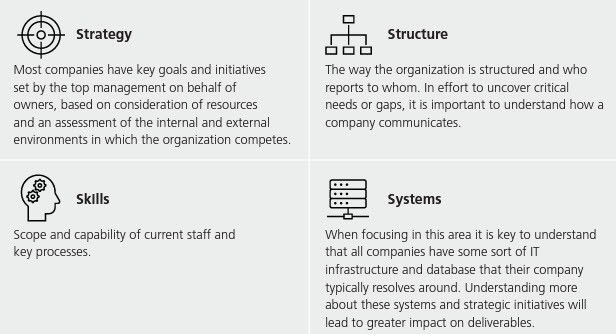IT as a Strategic Asset: The New Paradigm for Leaders in the Hybrid World
With all the talk of businesses needing to adapt to a hybrid world, all organizations are experiencing a Cultural Revolution. Today, more than ever, IT needs to be aligned to the overall goals and objectives of the organization. I see pioneering leaders today, working from a design premise to realize value from IT as opposed to one focused on managing IT. While this might seem subtle, it represents a profound shift in the application, not a transformation of IT.
Over the past year, no area has undergone more rapid transformation than the way we work. Employee expectations are changing, organizations are struggling to re-define the workplace, and we all are dealing with the rapid pace of change. The state of business today dictates that the role of IT has changed. For global enterprises to keep up with the accelerated rate of change, IT must be viewed by leadership as strategical functions of business. A fundamental flaw in today’s business world is that global business executives pass off technological decisions to IT staff. This is problematic because, in these cases, leadership is not fully considering the value of digital technologies when it comes to business strategy. “According to a McKinsey study, a whopping 70% of all digital transformations fail. One of the biggest challenges of digital transformation is not having an enterprise-wide digital transformation strategy.“
Executives who take a more hands-on approach in transformations by investing time to understand technologies as they relate to business strategies can help to improve their organization’s competitive advantage — empowering employees to focus on strategic business goals. The conversation effective leaders are having today is how to develop processes, new roles and skills to deliver a dynamically changing portfolio and workplace environment. This will allow them to meet the strategic initiatives of the organization by directly impacting the end user experiences both internally and externally. Effective leaders today are seeing and applying IT at as a strategic asset and not simply a cost center. IT services are now being discussed as a critical component of business processes that build revenue and create competitive advantages.
Here are 3 things I recommend leaders can do to better equip themselves to leverage and apply information technology to be a facilitator to an organization’s culture, agility and bottom-line growth.
Get Visibility into Current State
Global leaders need visibility into data that matters. I see so many companies who are simply paralyzed in making decisions or chasing things they cant define or measure. When I get brought in to help consult, I find that almost always, if not always, the reason for no action is due to lack of documentation. Leaders are drowning in information, but lack actionable intelligence to make decisions. In our experience, by collecting and evaluating the current state of business processes, and addressing time and skills gaps for their digital technologies and business workflows, it can provide great insight and visibility for decisions makers to be able to have to critical data to make educated decisions on business-focused services.
Tool Sets We Use:
- Whiteboard and Co-creation Workshops
- Maturity models that reveal how well an organization’s employees will be able to adapt to change
- Detailed strategic frameworks that align digital transformation with business strategy
- Roadmaps that are unique to each client’s specific business needs
Identify Your Maturity Level
Most executives are familiar with business maturity levels; however, there’s also an IT maturity level that directly aligns with the maturity level of the business. Identifying where you are as an organization and where you want to go helps better align goals and leads to better speed to execution. Below is a simply 6-point scale I use to help identify current state to better understand how Information and technology is impacting an organization:
Maturity Levels, Traits and Goals:
Identify Future State - Align Technology and Business Initiatives
When working with clients or potential clients, I recommend a simple strategy whiteboard session with both business and technology leaders. We look at the company a little bit differently by breaking it up into in four key areas, and ask them to tell me about key goals, initiatives, struggles and challenges they/you are having in each of these areas:
Leveraging technology for business innovation creates disruptive effects that have a wide-ranging impact on people, processes, and technology. When implemented correctly, such impacts can not only have immediate benefits but also send lasting ripple effects that can be a huge facilitator to an organization’s culture, agility and bottom-line growth. So as you can see, IT IS A LEADERSHIP ISSUE NOT AN IT ISSUE
Other Insights




